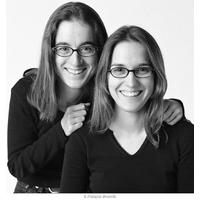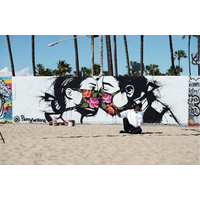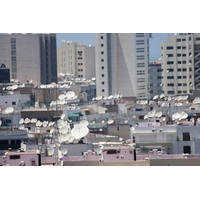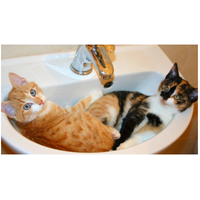It turns out that every single person is not that special. At least when it comes to looks. Canadian photographer François Brunelle has released a series of photographs entitled “I am not like the others!”, Where he shows people who look almost the same, but are not related to each other.
The coronavirus has affected the entire world. People are excited and the streets are empty. Well, almost empty. Even if absolutely everyone remains at home, one can expect that one group will definitely remain faithful to the streets and will wander through them - these are street artists.
After years of living in Morocco, Algeria and Egypt, Manuel Alvarez Diestro dedicated a new series of photographs to North African architecture.
In particular, the satellite dishes that inhabit buildings. Sticking to facades or located on the roofs of buildings, plates add an extra layer to urban buildings. They are like parasitic living creatures that have attached themselves to structures.
To prepare for this portrait, Shannon LaNier donned a black coat and wrapped a thick, layered collar around his neck, a suit matching the one worn by Thomas Jefferson in the famous 18th century painting. The Houston news anchor was featured in an ongoing series by British photographer Drew Gardner. The series recreates photographs, paintings and other images of historical figures with the help of their descendants. Lanier's photograph is particularly significant because he is the sixth generation grandson of Thomas Jefferson and Sally Hemings, the slave of the third president of the United States, whom he forced to bear his children.
Cat owners are well aware of this picture. They enter the bathroom to wash their hands, but find a giant ball of fur sleeping in the sink. The cat took possession of her, considering porcelain his concave mattress. So why do cats do this?
1. The first artificial plastic was obtained by the Englishman Alexander Parks in 1855. The plastic, called parkesin, was made from cellulose treated with nitric acid and a solvent.
2. In 1866, Alexander Parks founded the Parkesine Company for the production of parkesine, but after 2 years the company went bankrupt due to poor product quality.
Traffic at the craziest intersection in the world: Meskel Square in Addis Ababa, Ethiopia's capital. There are no traffic lights, no roundabout, no traffic controllers, but there are many lucky people trying to avoid any collision.







